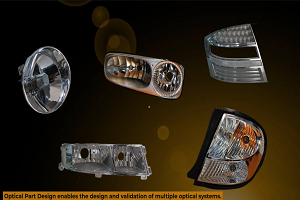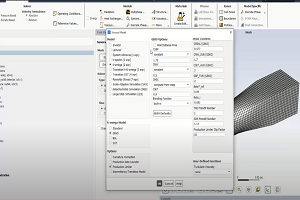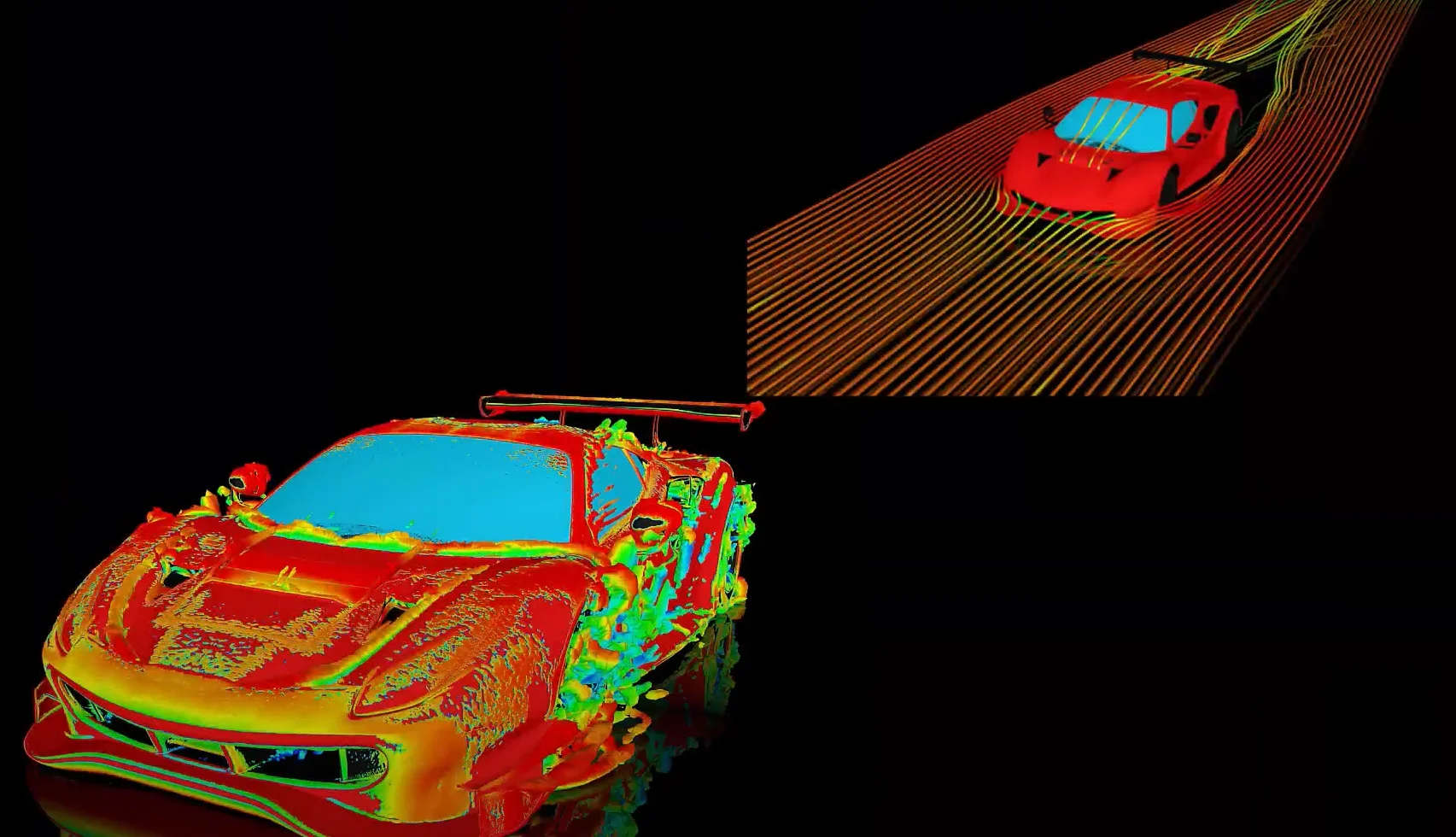-
-
March 14, 2024 at 10:32 am
 SolutionParticipant
SolutionParticipant
Introducing the Scade One launch blog series
This article is part of the Scade One launch blog series. Scade One is a model-based solution for the development of embedded software applications. As we approach the launch of the first product version of Scade One, we are publishing this blog series on the main highlights of Scade One 2024 R1, starting with:
- A Visual Coding Experience: We’ll introduce the new modern user interface and user experience of Scade One, designed to make the tool intuitive and engaging.
- Bridging the Gap between Model-based and Programming: We’ll show how Scade One combines the ease of use of model-based tools and the power and expressivity of programming languages. New modelling constructs allow Scade One to be used both in traditional control software and more complex mission and autonomy software.
- An Open Model-Based Ecosystem, Ready for MBSE: Scade One is designed to be integrated into a Model-Based Systems Engineering (MBSE) process, and is bundled with the Ansys System Architecture Modeler, a web-based SysML v2 modeler. We’ll also describe the import of software component interfaces from SysML v2 into Scade One.
- Democratizing Model-Based Development (this blog): We’ll introduce the new entry-level offering of Scade One, making the model-based approach, used successfully for safety-critical applications for more than 20 years, accessible to any company developing safe and reliable embedded software.
We are eager to share with you what is coming in this new chapter for SCADE.
A new entry-level offering for Scade One
With the first product release of Scade One in 2024 R1, Ansys is introducing a new entry-level offering, called Scade One Essential, that has no equivalent in the SCADE product family. This new, simplified offering is tailored for smaller teams developing reliable embedded software.

New segments that are a great fit for Scade One EssentialSo what can you do with Scade One Essential?
Scade One Essential is an all-in-one solution for non-certified embedded software development, from design to code generation. It includes:
- Robust modeling capabilities. The full Swan language is supported, as described in a previous blog. All the modeling features described in the first blog, including on-the-fly checks or auto-layout, are available.
- Model debugging. Scade One can execute models step-by-step, displaying input and output data seamlessly in the IDE.
- Code generation capabilities. Scade One Essential can generate safe, portable, and efficient C code, that can be integrated into any embedded platform.
What is not available in Scade One Essential?
Rapid Prototyper, which allows creating graphical panels for simulation and debug, is only bundled with Scade One Studio, the best-in-class IDE offering of the Scade One product family. Moreover, only the Scade One Code Gen offering features all code generation and traceability options between model and generated code.
In future versions, advanced modeling and productivity features will rather be integrated into Scade One Studio. The code generator included in Scade One Essential will never be qualified. More generally, tools and capabilities supporting software safety certification (such as test execution, coverage, traceability to requirements, etc.) will not be part of Scade One Essential.
Scade One Essential uses the same language and the same project/model formats as Scade One Studio. One can start with Scade One Essential and upgrade as more advanced features are needed.
Scade One Essential covers the full workflow for mission-critical embedded applicationsWho is Scade One Essential for?
Scade One Essential is tailored for small teams of system & software engineers developing mission-critical embedded software (with no certification objective).
As a reminder, Ansys also offers a dedicated Startup Program that allows small startups to get access to Ansys products with advantageous conditions. The Embedded Software Startup Bundle already includes SCADE Suite and SCADE Display, and will soon be extended with Scade One. For students, a free student version can be downloaded for free. A student version of Scade One will also be available starting with 2025 R1.
Why use Scade One for a non-certified application?
SCADE is a reference for safety-critical applications in A&D, Automotive, Rail, Energy and Industry. SCADE tools allow our customers to secure their certification journey, by reducing and automating activities required by safety standards. You may think that this is not a tool for you if your project has no certification requirements. Let us try to convince you otherwise!
Learn from best practices in the safety-critical domain
If Scade One is good enough for a fly-by-wire system or a nuclear power plant, then it must be good enough for your application too! With our new entry level offering, you can benefit from over 25 years of experience building safe and reliable software.
Catch bugs early with a model-based approach
In Scade One, most activities are performed at model level, on host. This allows to refine the behavior and catch bugs early, with the confidence that the generated code will have the same behavior when run on target.
Experience has shown that this approach allows to create safe and reliable software faster than with programming languages like C/C++. It avoids late rework of the design and requirements, leading to a faster time-to-market.
A tool usable by system/control engineers
As discussed in depth in a previous blog, Scade One allows non-programmers to build complex behaviors, using a visual notation they are familiar with. You don’t need two separate teams of system engineers and software engineers.
A domain-specific language for control and mission software
Modeling in Scade One is based on a language called Swan, that was designed from the start for safe and reliable embedded software. There is no need for a safe subset or coding rules like with other approaches. The language mixes dataflow and state machines, that are particularly suitable for reactive, real-time embedded applications. Thanks to the built-in notions of the language (concurrency, logical time), complex reactive behaviors can be described and verified more easily than in a general-purpose programming language like C/C++, Ada or Rust.
It is also very easy to have Swan models co-existing with C code. The C code generated from a Swan model is portable, with no external dependency and can be easily integrated in any environment. A Swan model can also use existing C code and libraries as external code.
Stay tuned!
In this blog, we’ve presented the new entry-level offering for Scade One, democratizing the model-based approach, used successfully for safety-critical applications for more than 25 years, to any company developing safe and reliable embedded software.
If you are an existing SCADE Suite user, you can already try Scade One Essential, using your existing licenses. Just go to the Ansys Embedded Software download portal, download Scade One 2024 R1 and you’re set!
This concludes our blog series for the launch of Scade One 2024 R1. Don’t forget to take a look at the previous blogs if you have missed them (there are links in the intro). We will be back with more blogs covering Scade One in the coming months. Stay tuned!
About the author
Cédric Pasteur (LinkedIn) is a Senior Product Manager at Ansys. He has been working on Scade One, Ansys’ latest-generation model-based embedded software development product, since its inception. He specializes in programming language theory and its application to safe embedded systems.
-


Introducing Ansys Electronics Desktop on Ansys Cloud
The Watch & Learn video article provides an overview of cloud computing from Electronics Desktop and details the product licenses and subscriptions to ANSYS Cloud Service that are...

How to Create a Reflector for a Center High-Mounted Stop Lamp (CHMSL)
This video article demonstrates how to create a reflector for a center high-mounted stop lamp. Optical Part design in Ansys SPEOS enables the design and validation of multiple...

Introducing the GEKO Turbulence Model in Ansys Fluent
The GEKO (GEneralized K-Omega) turbulence model offers a flexible, robust, general-purpose approach to RANS turbulence modeling. Introducing 2 videos: Part 1 provides background information on the model and a...

Postprocessing on Ansys EnSight
This video demonstrates exporting data from Fluent in EnSight Case Gold format, and it reviews the basic postprocessing capabilities of EnSight.

- An introduction to DO-178C
- Scade One – Bridging the Gap between Model-Based Design and Traditional Programming
- ARINC 661: the standard behind modern cockpit display systems
- Scade One – An Open Model-Based Ecosystem, Ready for MBSE
- Scade One – A Visual Coding Experience
- Using the SCADE Python APIs from your favorite IDE
- How to Verify a Model on Host with SCADE Test? (Part 4 of 6)
- How to integrate multiple SCADE models into one executable
- Scade One – Democratizing model-based development
- Introduction to the SCADE Environment (Part 1 of 5)

© 2026 Copyright ANSYS, Inc. All rights reserved.


